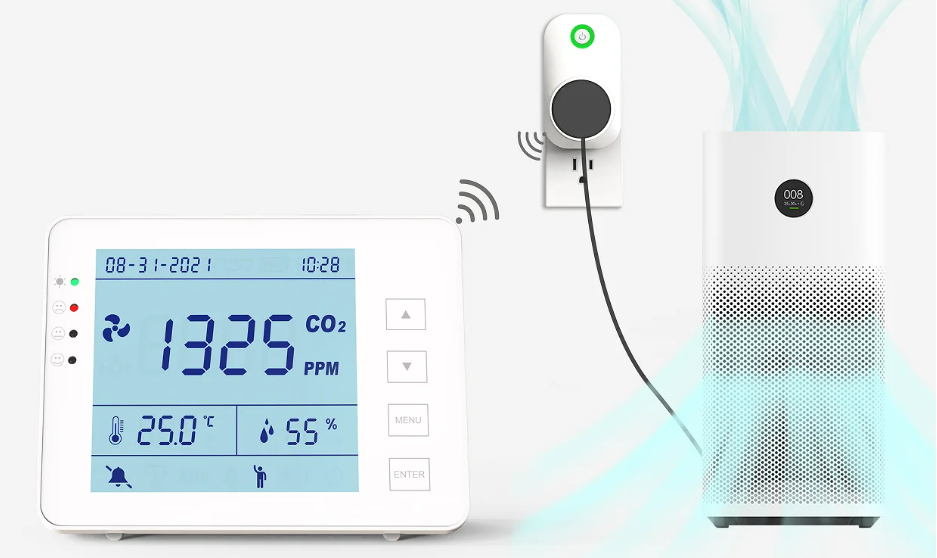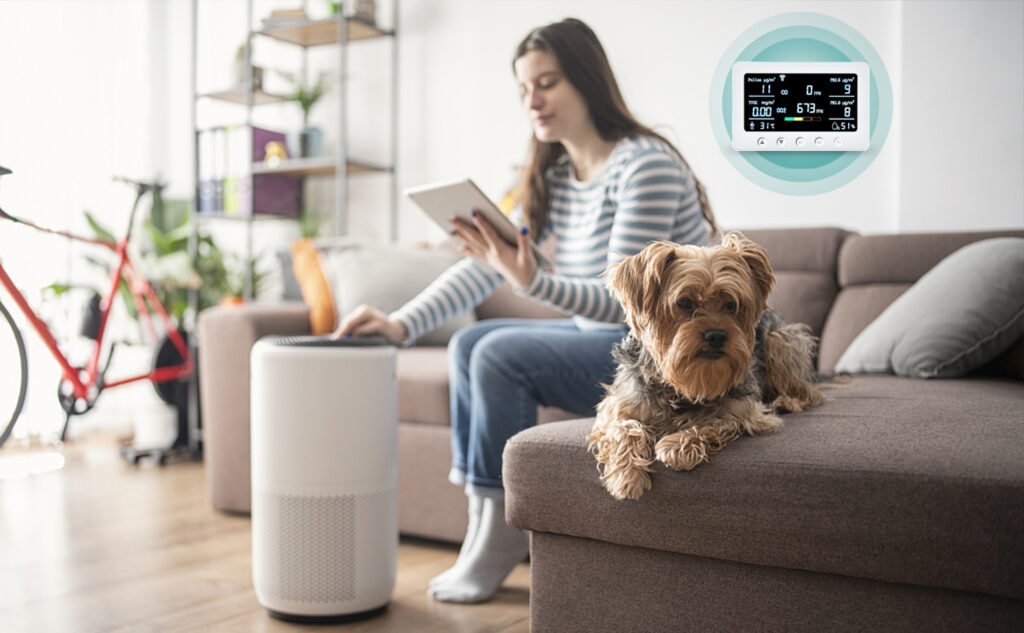Inadequate indoor air quality (IAQ) can lead to a host of health issues, from headaches and allergies to heart disease and respiratory disorders. Air purifiers have gained popularity as a solution to this serious issue, but can they offer reliable data on air quality?
GZAIR indoor air quality monitors are useful in this situation. By giving precise real-time data, our gadgets assist in measuring the efficacy of air purifiers and allow building and facility managers, house owners, sustainability consultants, and air purifier manufacturers make educated decisions regarding their air quality solutions.

HVAC system upgrades can be difficult and costly. Because of this, portable air purifiers are playing a bigger role in current construction and renovation projects. When paired with precise air quality data, they not only lessen indoor air pollution and enhance tenant well-being but also have the potential to cut operational expenses.
Although installing air purifiers is an essential first step in improving IAQ, the following considerations should be made when interpreting the air quality data from their integrated sensors:
Since built-in air quality sensors are not the main technological component of air filtration systems, they could not be of the greatest caliber.
Typically, built-in sensors are limited to measuring the air directly surrounding the apparatus.
This may result in inaccurate results and a misleading impression of the general level of air quality in a structure or area.
Thus, how can you make sure that you are making well-informed judgments on the quality of the air?
Using indoor air quality monitors is the solution. These gadgets give users access to real-time information on the concentrations of several air contaminants, such as pollen, particulate matter (PM), volatile organic compounds (VOCs), humidity, and temperature.
Manufacturers of air purifiers and air cleaning products can use precise, real-time indoor air quality data to demonstrate how efficient their products are against PM2.5.


